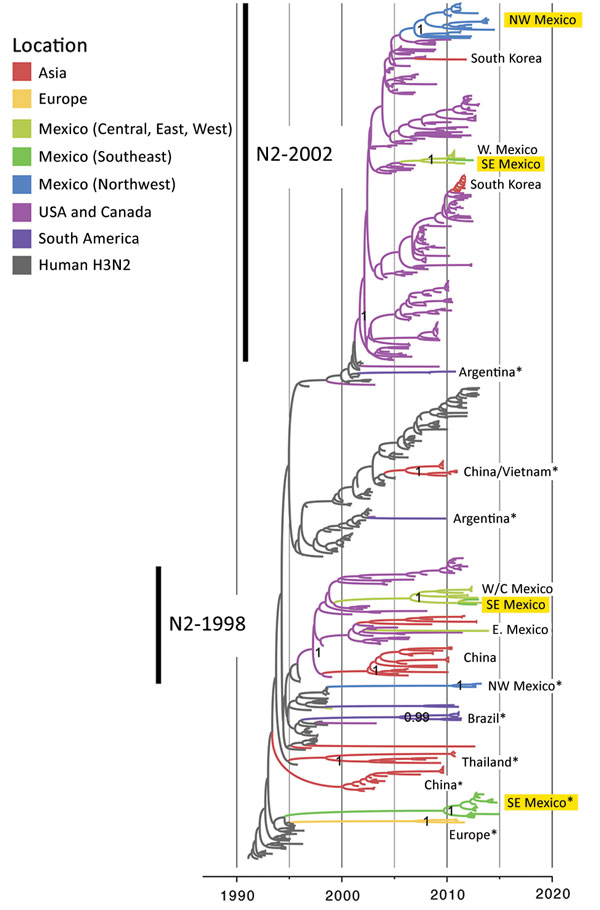Volume 25, Number 4—April 2019
Research
Human-Origin Influenza A(H3N2) Reassortant Viruses in Swine, Southeast Mexico
Figure 5

Figure 5. Evolutionary relationships between N2 segments of avian influenza viruses collected in humans and swine globally. Time-scaled Bayesian maximum clade credibility tree is inferred for N2 segment. Labeling and shading is similar to that in Figure 4, with the additional labeling of the N2–1998 and N2–2002 lineages. NW, northwest; SE, southeast; W, west; W/C, west/central. *Direct introduction from humans. A more detailed phylogeny, including tip labels and all posterior probabilities, is provided in the Appendix Figure.
1Current affiliation: Kansas State University, Manhattan, Kansas, USA.
Page created: March 17, 2019
Page updated: March 17, 2019
Page reviewed: March 17, 2019
The conclusions, findings, and opinions expressed by authors contributing to this journal do not necessarily reflect the official position of the U.S. Department of Health and Human Services, the Public Health Service, the Centers for Disease Control and Prevention, or the authors' affiliated institutions. Use of trade names is for identification only and does not imply endorsement by any of the groups named above.